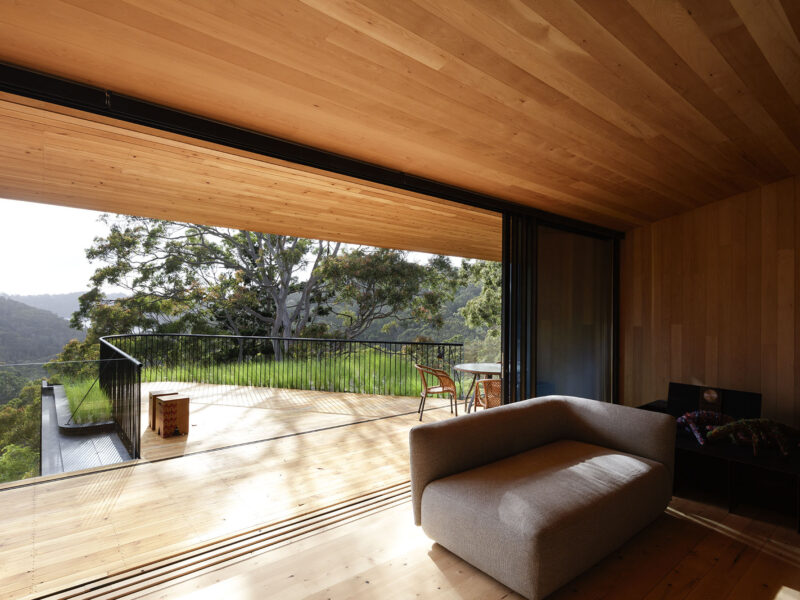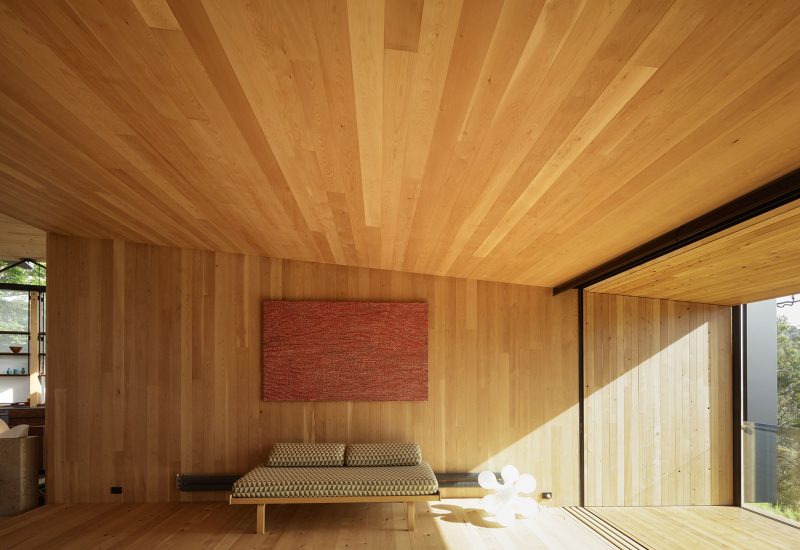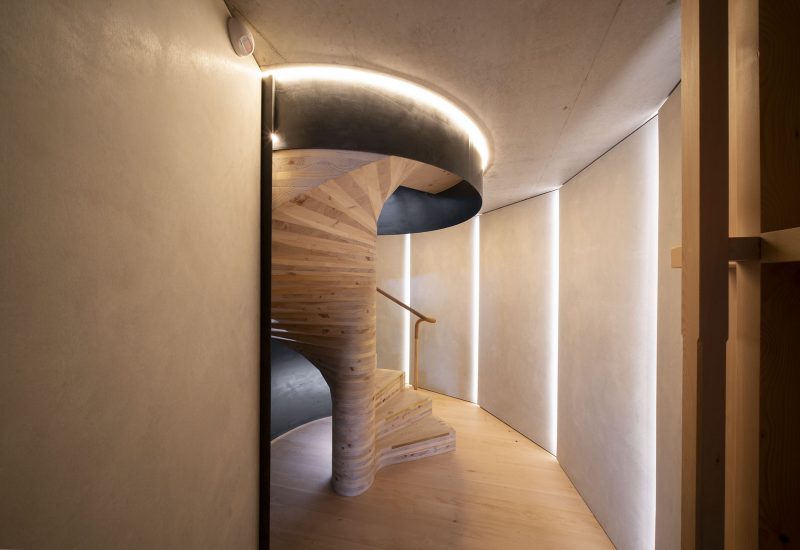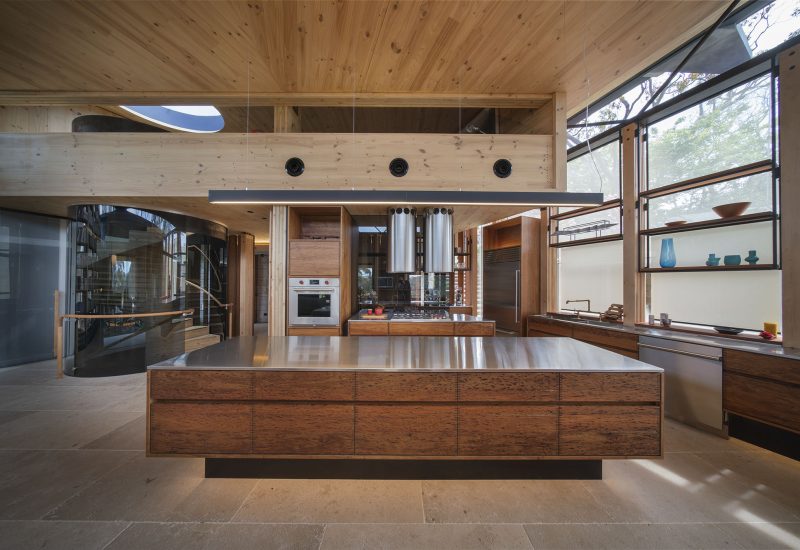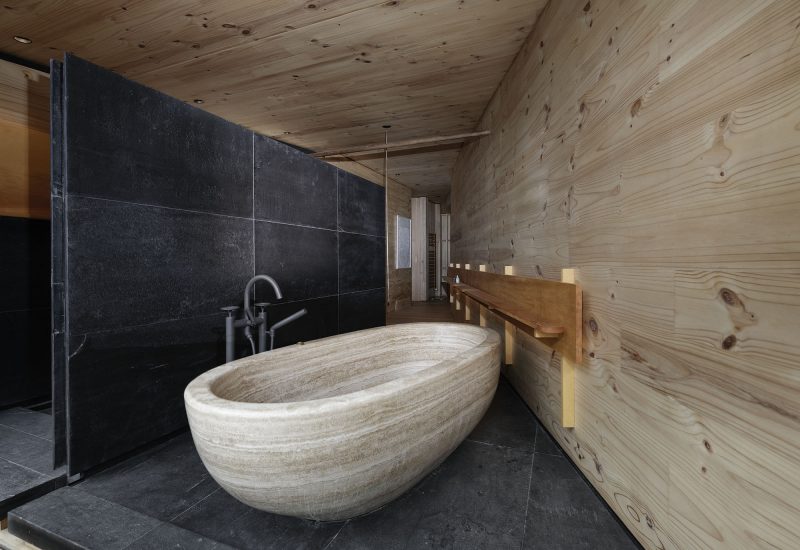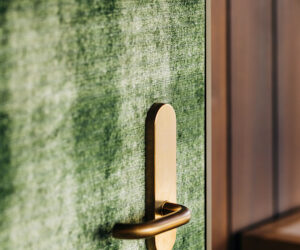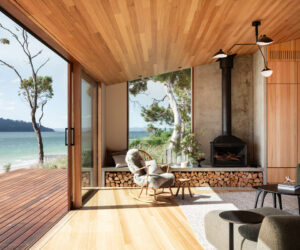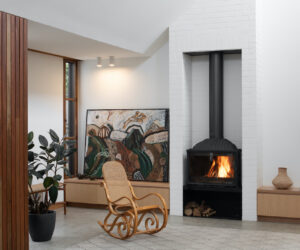The Seed House: Fitzpatrick’s timber monument
James Fitzpatrick has been designing buildings across Australia and Southeast Asia for the past 30 years. As the founding partner of Fitzpatrick+Partners, one of Australia’s leading architectural design studios, the firm has come to be known for pushing the boundaries on technology and building systems with every new build. When it came time to design his own family home on Sydney’s lower North Shore, Fitzpatrick curated the ultimate mix of materials. The design includes his signature combination of geometry, an engagement with the surrounding environment, and a dedication to sustainable and natural materials. The result is the staggeringly impressive Seed House.
With a desire to create a space in harmony with the surrounding scenic lush bushland, sourcing sustainable and natural materials was of utmost importance. Choosing various species of Tasmanian Timber to shine throughout the home was an obvious choice for Fitzpatrick. The timber met the high standards and environmental focus of the modern home, and also brought back memories of Tasmania’s North West and West Coast, where Fitzpatrick was born and grew up.
Timber rich in character
Purchasing the Sydney property eight years ago, the Fitzpatrick’s took that time to understand the site and its ecosystem. Armed with this knowledge and a clear objective to create a long-term home that would develop its own character with age and patterns of use, the palette of materials and products was carefully chosen.
Fitzpatrick’s admiration for Tasmanian Timbers began long ago, so the long lead time allowed him to grow his already existing collection of Huon Pine and to source Celery Top Pine and Blackwood from recycled or renewable sources. Blackwood timbers were always intended to feature in the furniture of the house, and the search commenced to find the perfect logs and slabs.
Within the Seed House he used his spectacular collection of Huon Pine in the bath house for shelving and wall panels and the Blackwood now shines in the heart of the home, beautifully showing off the grain and character across the entry hall and kitchen joinery.
Throughout the rest of the home, the Tasmanian Celery Top Pine was used for the structural columns, floor and wall linings, doors and exposed stud walls.
“We quite often get asked why we used such a wide variety of Tasmanian timbers in the home and it comes back to my roots- being born in Tasmania, growing up and studying there. It’s what I was surrounded with so using this timber is bringing part of that into a different environment and it’s bringing part of my history into the house.
It’s important that a house tells many stories and this house is full of memories and collections of stories not just from myself but also my wife and the children as well. Tasmanian timbers were all selected obviously to work together but also selected because of the stories they have.”
While using timber generally is important, it’s Tasmanian Timber that Fitzpatrick has a particular fondness for.
“What we like about Tasmanian Timber is that there is a story attached with the species and it’s a story you can touch and a story you can hold and share. It’s also about the locality of the timber, it’s a part of our continent and a part of our history.”
Sustainability and stories aside, as with all architects, aesthetics is always considered which is another reason for the choice of Tasmanian Timber throughout The Seed House.
“When you walk into a timber building it just feels beautiful, it feels warm, it feels inviting in the detail. How often do you hear a person say, ‘look at this lovely aluminium windows or glass table.’; it’s an inherent touch of nature that we all really love as humans.”
Using timber is good for the environment
This is not the first project of Fitzpatrick’s where timber was predominantly the main component of the structure and design. Using timber more and more often for its sustainability and carbon sequestering and structural properties, it’s becoming commonplace in Fitzpatrick’s projects.
“People are starting to understand that using timber is good for the environment which is good for the people of the building and good for the wider world.”
We thought about ways in which we could use the timber to express the integrity and honesty of the material but also look at new environmental technologies and systems from all around the world and how we could bring those into Australia and get them to a residential home and make something special. These concepts were front of mind for this project.”
Specialising in large scale commercial and entertainment projects, Fitzpatrick+Partners have enhanced cityscapes across Australia through carefully considered design using a framework set around geometry and the environment.
The Seed House: Fitzpatrick’s timber monument
